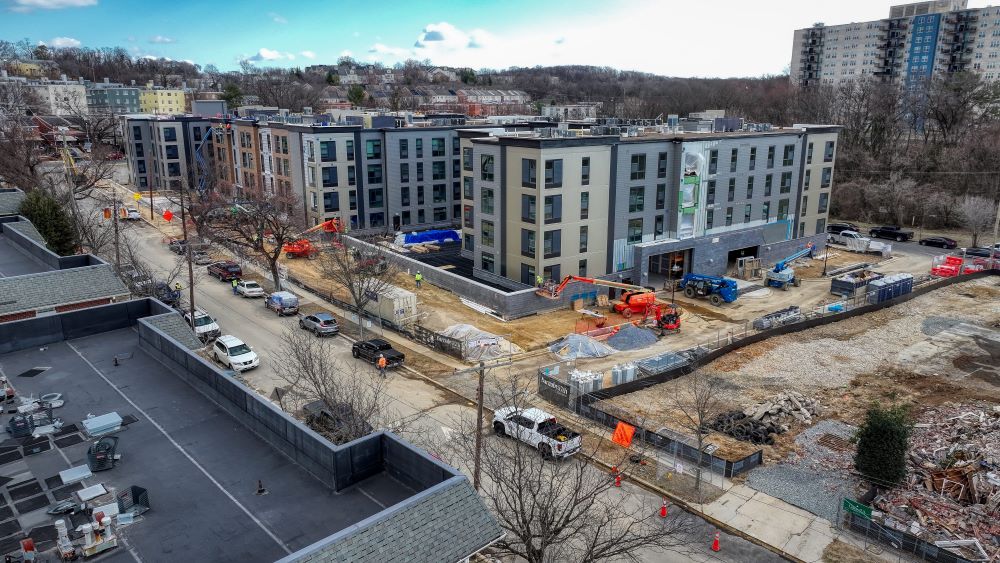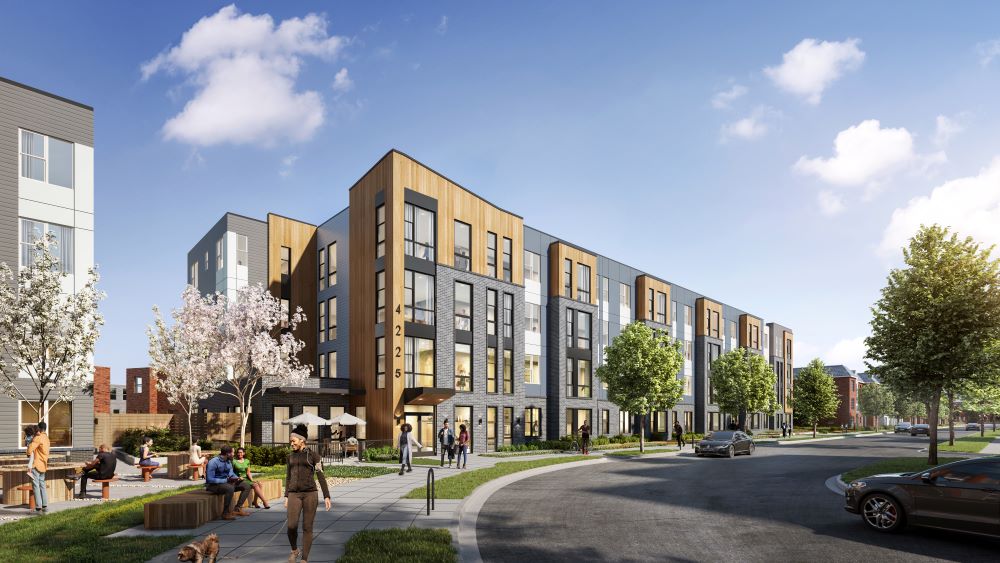Alternate Bond Structure Saves $3 Million on DC Project

By Mark Fogarty
6 min read
Gilbane Development Co. has saved nearly $3 million on its Barnaby & 7th project in Washington, DC, using a forward M-TEB instead of a traditional bond structure.
Bobvala Tengen, a senior development manager at Gilbane, told a panel session of the National Housing & Rehabilitation Association that the firm saved $2.735 million in total by using Fannie Mae’s Forward M-TEB (the acronym stands for Mortgage-Backed Securities as Tax-Exempt Bond Collateral).
A sale-leaseback arrangement on the property with the District of Columbia helped achieve those savings. A lower interest rate with the M-TEB also resulted in $1.65 million in extra bond proceeds.
“We did a sale/leaseback with the city,” says Tengen. “We already owned the land, and we sold it to the city and leased it back.
“In doing that, the leasehold value of the land was lower than the fee simple (private property), which ultimately reduced our aggregate basis and reduced the amount of taxes and bonds needed to meet the 50 percent test.”
Additionally, with the District owning the land, DC established affordability on the property for 99 years through a 99-year ground lease.
Using the forward M-TEB structure, “we were actually able to have positive arbitrage, and with that yield, blending of the short-term bonds exceeded the negative arbitrage associated with the long-term bonds. We were able to limit the number of bonds we used in the project and the amount of subsidies we requested from the city.”
Tengen informed the NH&RA meeting that by utilizing the Fannie Mae Forward M-TEB, Gilbane secured a 5.71 percent rate compared to 6.4 percent on a standard rate structure, resulting in proceeds of $19,780,000, which translates to an additional $1,650,000.
Breakdown of Savings
The following is a breakdown of savings achieved with the M-TEB:
- Estimated permanent loan proceeds: $1,650,000;
- Estimated positive earnings: $615,000;
- Estimated additional equity: $1,600,000;
- Estimated additional construction interest: ($700,000); and
- Estimated additional costs of issuance: ($430,000).
Gilbane recently closed on Phase 2, a 229-unit project (called initially Belmont Crossing; the first phase included 169 units). M&T Realty Corp. served as the mortgage lender, and the total development cost amounted to $134 million.

“The stars aligned to execute on this affordable housing project,” says Alexander Marte, senior development manager at Gilbane, adding, “This is what we do.”
Barnaby & 7th has given Gilbane “a unique opportunity” to move a stalled project forward.
Marte says Phase 1 is “97 percent done,” and prospective tenants should move in by the first week of June. (Residents who lived at the original housing on the site have the right to return.) He says that demolition for Phase 2 has just been completed, and construction of those new units is expected to take 18 months.
Marte states that the project “came with a lot of challenges,” but Gilbane is successfully moving a previously stalled project toward completion.
“The project came about because there were a couple of prior developers before Gilbane’s admission to the joint venture that acquired the property through a fee simple transaction.”
In time, the District foreclosed on the property and brought in three new developers to acquire it. Eventually, Gilbane came in by buying out one of the owners.
The first phase, consisting of a single building with 169 units, is nearly complete. The second stage, which includes 229 units across four buildings, has just completed the demolition phase, while the third stage remains in the planning process. Marte indicates it will also feature affordable rentals, providing between 80 and 120 units.
Permanent Supportive Housing
Marte says that one of the four buildings will be permanent supportive housing for the formerly homeless, aimed at serving single adults with various mental disabilities. The supportive services company JayDot will assist those tenants.
“In partnership with JayDot and Housing Help Plus (HHP), Phase 2 will create space that offers comprehensive case management services under a Housing First approach. Residents will benefit from detailed case plans addressing wellness, education, and employment needs, monthly home visits, and financial education classes. These services are designed to support residents in achieving self-sufficiency and enhancing their overall quality of life,” according to Gilbane.
The first two phases involve four percent Low Income Housing Tax Credits, while the third phase anticipates using nine percent tax credits. The District of Columbia Housing Finance Agency provided the private activity bonds for the four percent LIHTCs. Additionally, the District supplies DC tax credits and soft second financing.
Phase 2 will utilize income averaging to allocate 20 percent of the units to individuals earning up to 80 percent of the Area Median Income.

The intricate financing reflects a complex project. For instance, Marte notes that the developer has employed three different architects for the five buildings.
“I think that worked well for what we were trying to accomplish,” he says. “It really does create a walkable community. It was a chance to show what good quality design can bring about for the community.”
Marte believes the project’s impact on DC’s Ward 8 “will be quite immense,” he says, helping to alleviate some of the challenges in the ward’s Washington Highlands neighborhood.
“This is an opportunity to keep folks who have lived in the community in the community,” he says, and it will be a game changer, demonstrating the potential of a great public-private partnership.
Phase 1 “will bring a mix of one-, two-, and three-bedroom units, with ten to 12 Permanent Supportive Housing (PSH) units supported by the 34 Local Rent Supplement Program (LRSP) project-based rental assistance,” says the company.
“On-site social services will be available for residents needing assistance in self-sufficiency and to help them retain housing and improve their quality of life. The location is transit-friendly and well-served by metro bus lines and major highways. In addition to the new affordable housing units, the Phase 1 project will construct a public road to support municipal transit-oriented development policy and provide access to a below-grade parking garage.”
Other partners in the project are MED Developers and Equity Plus Manager LLC.
Gilbane Development Co. serves as the real estate development, financing, and ownership arm of Gilbane, Inc., a 150-year-old family-owned company. The company has over $8.5 billion in development and has completed or currently has over 20,000 housing units underway.

